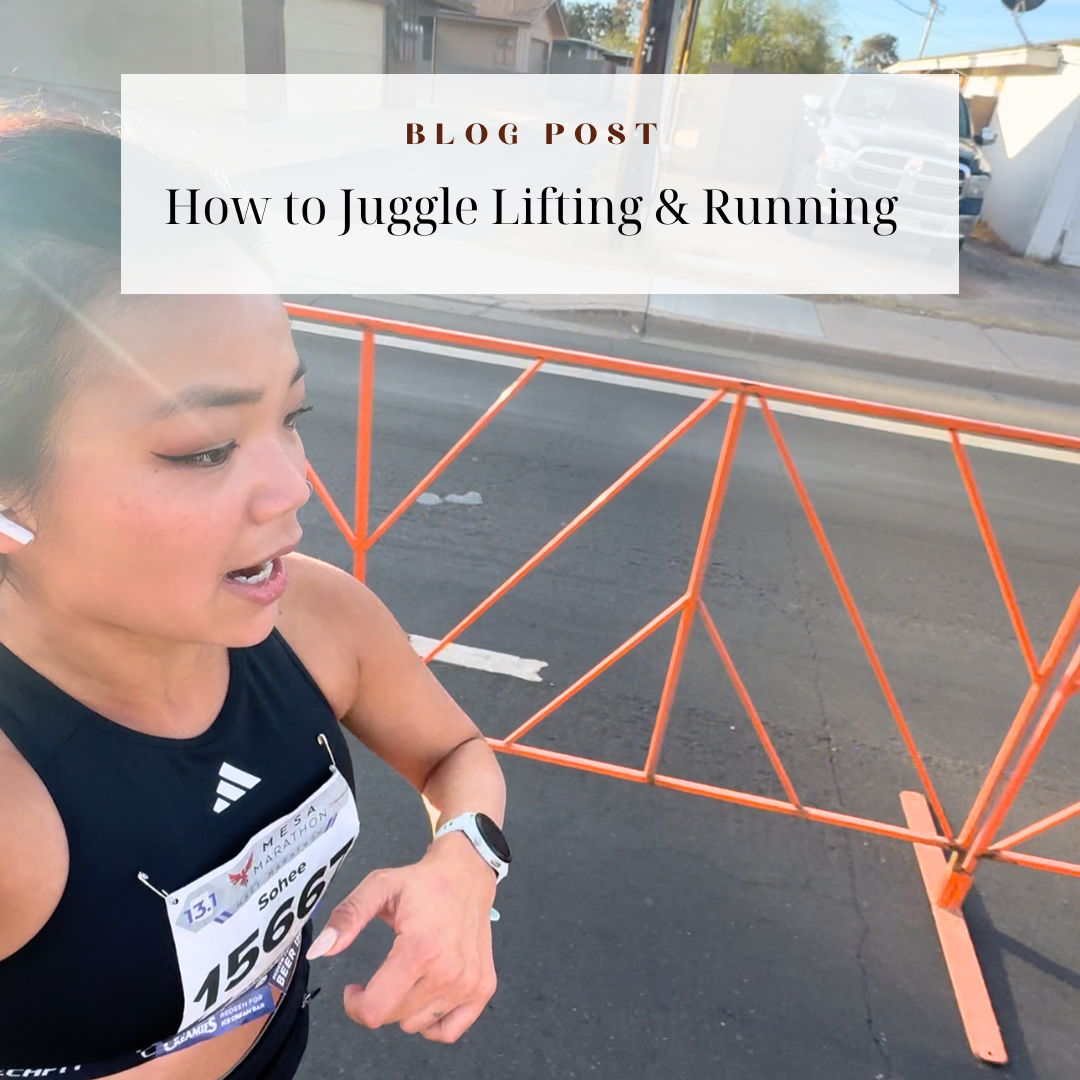Is Spot Reduction Really Possible?

My weightlifting journey began in January of 2008. After picking up a copy of Oxygen magazine at the store and realizing for the first time that attaining a lean, athletic physique as a woman was entirely possible without making exercise my full-time job, I was hooked.
I dove in headfirst to the world of training and was overwhelmed with the plethora of information. I became a top level lurker on numerous fitness forums and stayed up late many nights, reading up on the latest and greatest routines that all the pros were busting out in the gym.
During this time, I also had well-intentioned friends doling out some, eh-hem, not-so-spot-on advice that I quickly devoured: Exercise order really doesn’t matter; Oh, you want nice triceps? Then do isolation movements nonstop; Okay, but as a girl, you really, really shouldn’t lift more than 20lbs… or else!
The first six months of my weightlifting journey, unsurprisingly, consisted of a whole lotta wheel-spinning.
I wanted my arms to look athletic, so I would do bicep curls, preacher curls, and concentration curls for a full hour followed by another hour devoted to tricep rope pushdowns, tricep extensions, and skull crushers.
Then I’d go run around the track for an hour in an effort to slim down my legs.
No, it wasn’t the most fun, but I was on a mission and there really was no other way to get the body I wanted… right?
The magazines told me I could do it. They said that 20 minutes of arm flapping a day would firm up the jiggle and blast the fat away.
(Who’s “they”? Why do people always refer to some mysterious “they” entity when trying to prove a point? This is hilarious to me.)
In short, I was trying to spot reduce.
What is Spot Reduction?
Spot reduction refers to the phenomenon in which fat can be specifically targeted on different parts of the body, generally via exercise.
Thousands of crunches for leaner abs.
Squats on squats on squats for lean legs.
You get the gist.
Is it Possible?
Unfortunately, as nice as it would be if it were the case, saying something enough times doesn’t actually make it true.
A 2011 study with Vispute et al. investigated the effects of abdominal exercises on abdominal fat. The exercise group was prescribed seven different abdominal exercises, while the control group received no intervention, and both groups maintained an isocaloric diet for six weeks. There was found to be no significant difference in abdominal subcutaneous fat. (It did improve muscular endurance, but that’s unrelated to the point of this post.)
Another study found that a localized lower body muscle endurance resistance training protocol did reduce overall body fat mass but not specific to the legs (Ramirez-Campillo et al., 2013).
And here’s another fun one: a 1971 study on tennis players examined the difference in the thickness of subcutaneous fat in their right and left arms and found that there was none (Gwinup et al.)! You’d think that for athletes who spend countless hours hitting a tennis ball using predominantly one arm would have significantly less fat in the working arm if spot reduction were a real thing, no?
All of this to say that fat loss is not site-specific, meaning that spot reduction is not actually possible.
Why Do Different People Lose Fat from Different Places?
In a word: gender.
Women in general tend to have higher levels of bodyfat than do men (Nielsen et al., 2004). As well, women tend to store bodyfat in the lower body in the form of peripheral subcutaneous, whereas men tend to store bodyfat in the abdominal region in the form of visceral fat (Nielsen et al., 2004). This gives women more of a pear shape and men more of an apple shape.
Additionally, when bodyfat is lost, women lose more femoral FM (Mauriege et al., 1999) while men lose more abdominal fat (Farnsworth et al., 2003), highlighting a sex discrepancy when it comes to regional fat loss (though this goes against my experience working with hundreds of female clients who typically lose bodyfat in their upper bodies first and lower bodies last, but I digress). The physiological mechanisms behind this phenomenon is not fully understood at this point.
In still another word: genetics.
I understand that genetics can be a soft spot for many (Okay, I totally did not intend for that to be a pun, but now I see how accidentally clever that was, so I’m sticking with it. Please don’t click away?). I think it’s worth taking some time to at least touch on the topic, though.
Where’d I get my body from?
I got it from my momma.
Kind of. But also from years and years of dedicated strength training and proper nutrition. It doesn’t sound quite as sexy to say that, though, does it?
Bouchard found that the degree of truncal-abdominal subcutaneous fat is determined by a genetic effect of 30% (1993), and Perusse et al. attribute 42% to 56% for subcutaneous fat and abdominal visceral fat, respectively, to heritability.
And of course, there a number of other factors as well that contribute to regional bodyfat distribution, including hormones, exercise, diet, and more.
All of this to say that yes, genetics do play a role in where an individual stores fat on his or her body, and it also appears to largely determine where we lose bodyfat first and last from (and conversely, where we gain bodyfat). But it should by no means be used as a scapegoat.
“My body looks like this because of my genetics, and there’s nothing I can do about it!” is a poor excuse (and an incorrect one, at that). There’s still a lot that can be done via behavioral intervention to change your physique.
Let’s cover that below.
Spot Enhancement: Creating the Illusion of Spot Reduction
Spot enhancement, or physique enhancement, is when you change the shape of your body by building muscle in specific areas. Weightlifters should be very familiar with this concept.
Because unlike bodyfat, muscle is site-specific (Wakahara et al., 2013).
For example, if you want to give off the illusion of having a smaller waist, then build wider lats by performing more lat-specific movements. If you want rounder, firmer, and/or more muscular glutes, then it would be in your best interest to perform exercises that target the glutes, such as hip thrusts, lunges, Bulgarian split squats, seated abductions, and glute kickbacks.
(Please note that I’m not saying that you should stick exclusively to bodypart splits or strictly to isolation movements. I actually tend to prefer full body or upper/lower splits for most people, though there is certainly a time and a place for other kinds of training programs as well.)
The cool thing about building more muscle all over is that having more muscle mass can actually give off the appearance of looking leaner overall. This applies to women as well, so ladies, don’t be afraid to build muscle. As long as you keep your nutrition in check (and we’ll cover that below), you will not look bulky.
Me in 2008 (102lbs) vs. me today (109lbs). This is the result of almost 8 years of heavy lifting and smart nutrition. As you can see, I’ve been able to add curves to my frame by adding some lean muscle mass all over.
Finally, it’s important not to overlook the three main mechanisms of muscle hypertrophy: mechanical stress, metabolic stress, and muscle damage. You can thank Dr. Brad Schoenfeld for this discovery a number of years back. We won’t flesh that out too much here, but can read his first original paper on muscle hypertrophy here and you can also find an interview with him on Bret Contreras’s site here.
Lose Bodyfat the Smart Way
While you can’t change your genetics, that doesn’t mean that it’s not ever worth leaning out.
I’ve written extensively on how to lose bodyfat the smart way on my blog, so I’ll just cover the basics here:
Make sure you’re eating at a caloric deficit –
but that’s not to say that you should crash diet. Rather, you want to eat as much as you can get away with while still making fat loss progress. Here’s a quick primer on determining your fat loss macronutrient numbers.
Increase dietary protein consumption.
The general consensus so far is that a higher protein (compared to a higher carbohydrate) diet promotes a higher degree of weight loss with increased loss of fat mass (FM) and retention of lean body mass (LBM) (Due et al., 2004). As a general rule, I like to recommend 1g protein/1lb body weight for most people. Yes, it’s more than what an individual “needs” so to speak, but consuming more protein can also aid with satiety.
Lift heavy weights and get stronger over time.
Resistance training coupled with a caloric deficit can result in maintenance of lean body mass (Ballor et al., 1988). In other words: What builds the muscle keeps it. Lift heavy and hard (while maintaining good form, of course). Place emphasis on the compound movements (pushups, pullups, squat, deadlift, hip thrust, etc.) and toss in accessory work as you see fit.
Stay consistently adherent on a program long enough to see progress.
I cannot emphasize this point enough. If you’re cutting out food groups left and right and you’re feeling miserable, there’s a high probability that you’re not going to last on your diet for very long. The most successful people stay away from dietary extremes and instead become masters of moderation. This is why I’m such a huge proponent of flexible dieting and macro counting – it’s sustainable, it balances health with life, and it allows you to actually enjoy your food. You can learn more about how to count macros by picking a copy of my latest product.
In Summary…
Here are the take-away points:
- Spot reduction is a myth, but spot enhancement is absolutely possible.
- Genetics, along with a multitude of other factors, determine where you store bodyfat on your body.
- You can change your physique pretty drastically over time by lifting weights and manipulating your diet.
- Focus on the big rocks of fat loss rather than obsessing over minutiae. Then stay consistently adherent. The best program for you is one that you can actually stick to.
References
Ballor, D.L., Katch, V.L., Becque, M.D., & Marks, C.R. (1988). Resistance weight training during caloric restriction enhances lean body weight maintenance. Am Soc Clin Nutr. 47(10:19-25.
Bouchard, C. (1993). Genes and bodyfat. Am J Hum Biol. 5:425-32.
Due, A., Toubro, S.k, Skov, A.R., & Astrup, A. (2004). Effect of normal-fat diets, either medium or high in protein, on body weight in overweight subjects: a randomized 1-year trial. Int J Obes Relat Metab Disord. 28:1283-90.
Farnsworth, E., Luscombe, N.D., Noakes, M., Wittert, G., Argyiou, E., & Clifton, P.M. (2003). Effect of a high-protein, energy-restricted diet on body composition, glycemic control, and lipid concentrations in overweight and obese hyperinsulinemic men and women. Am J Clin Nutr. 78:31-9.
Gwinup, G., Chelva, R., & Steinberg, T. (1971). Thickness of subcutaneous fat and activity of underlying muscle. Ann Intern Med. 74(3):408-11.
Kissebah, A.H., & Krakower, G.R. (1994). Regional adiposity and morbidity. Physiol Rev. 74(4):761-811.
Klausen, B., Toubro, S., Astrup, A. (1997). Age and sex effects on energy expenditure. Am J Clin Nutr. 65(4):895-907.
Kuk, J.L., & Ross, R. (2009). Influence of sex on total and regional fat loss in overweight and obese men and women. Int J Obes (Lond). 33(6):629-34.
Nielsen, S., Guo, Z., Johnson, C.M., Hensrud, D. D., Jensen, M.D. (2004). Splanchic lipolysis in human obesity. J Clin Invest. 113:1582-88.
Mauriege, P., Imbeault, P., Langin, D., Lacaille, M. ALmeras, N., Tremblay, A, & Despres, J.P. (1999) J Lipid Res. 40:1559-71.
Perusse, L., Despres, J.P. Lemieux, S., Rie, T., Rao, D.C., & Bouchard, C. (1996). Familial aggregation of abdominal visceral fat level: results fro the Quebec family study. Metabolism. 45:378-82.
Ramirez-Campillo, R., Andrade, D.C., Campos-Jara, C., Henriquez-Olguin, C., ALvarez-Lepin, C., Izquierdo, M. (2013). Regional fat changes induced by localized muscle endurance resistance training. J Strength Cond Res. 27(8):2219-24.
Schoenfeld, B.J. (2010). The mechanisms of muscle hypertrophy and their application to resistance training. J Strength & Cond Res. 24(10):2857-72.
Skov, A.R., Toubro, S., Ronn, B., Holm, L., & Astrup, A. (1999) Randomized trial on protein vs carbohydrate in ad libitum fat reduced diet for the treatment of obesity. Int J Obes Relat Metab Disord. 23:528-36.
Vispute, S.S., Smith, J.D., LeCheminant, J.D., Hurley, K.S. (2011). The effect of abdominal exercise on abdominal fat. J Strength Cond Res. 25(9):2559-64.
Wakahara, T., Fukutani, A., Kawakami, Y., & Yanai, T. (2013). Nonuniform muscle hypertrophy: its relation to muscle activation in training session. Med Sci Sports Exerc. 45(11):2158-65.




